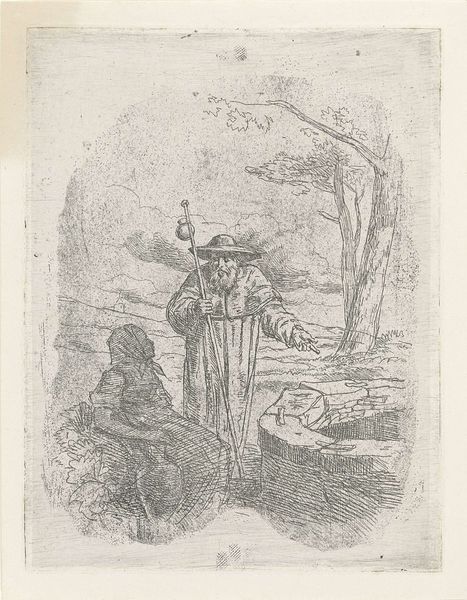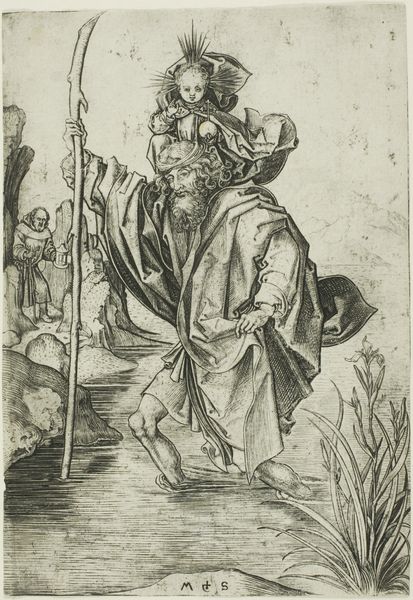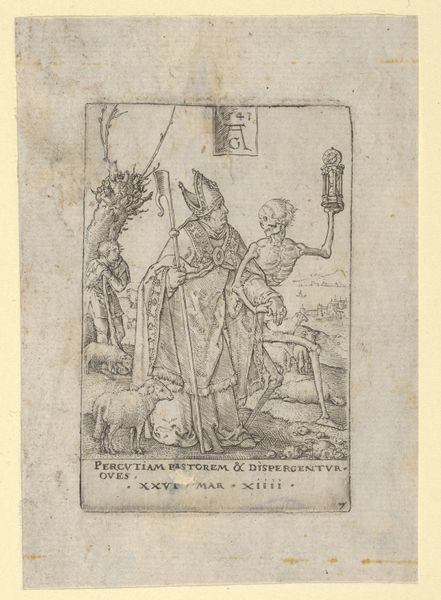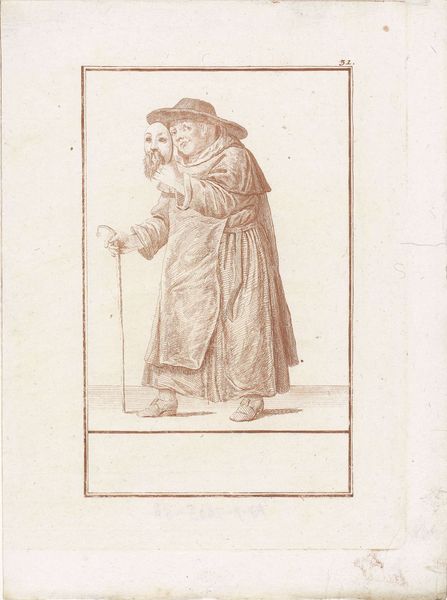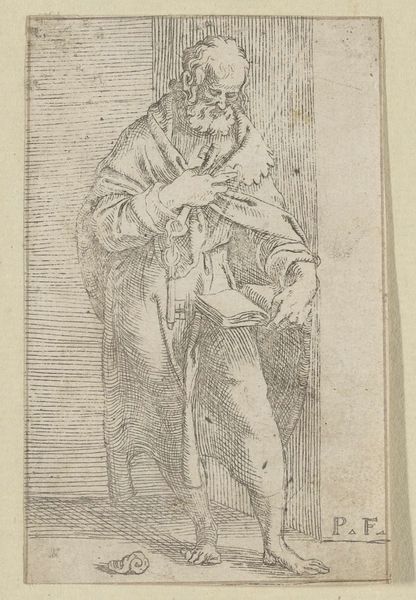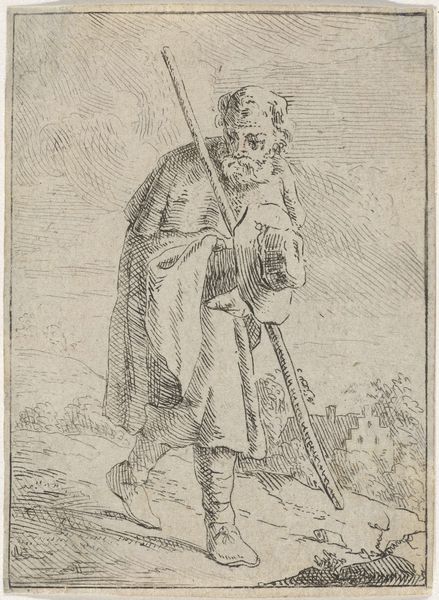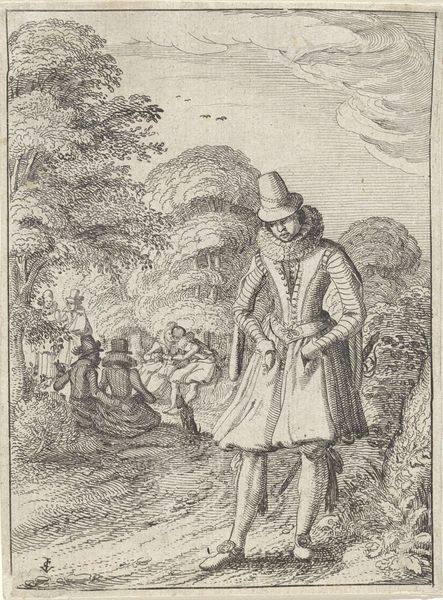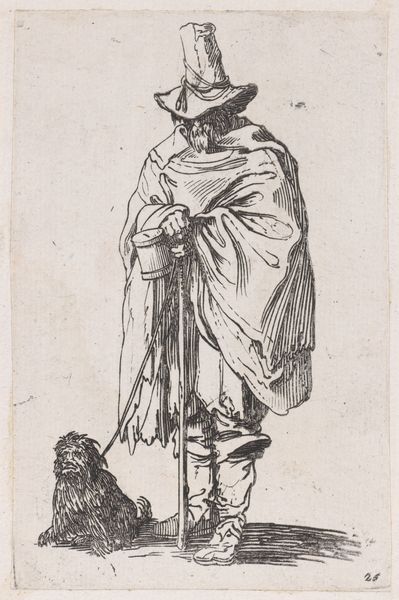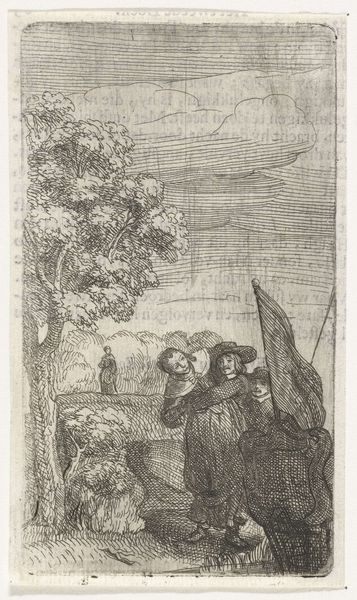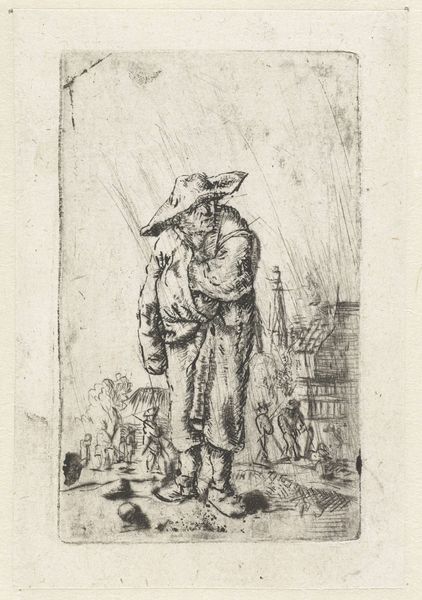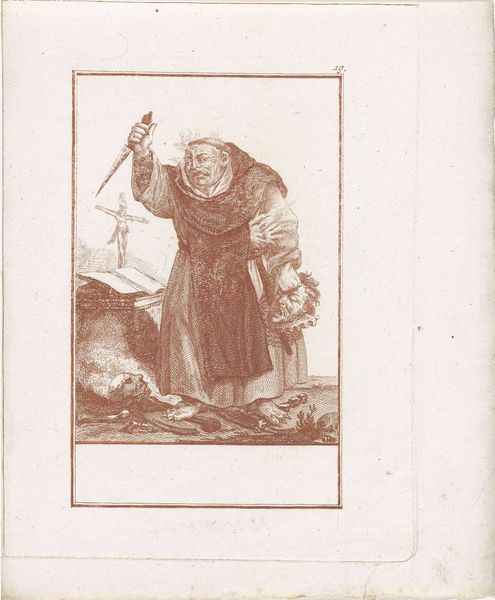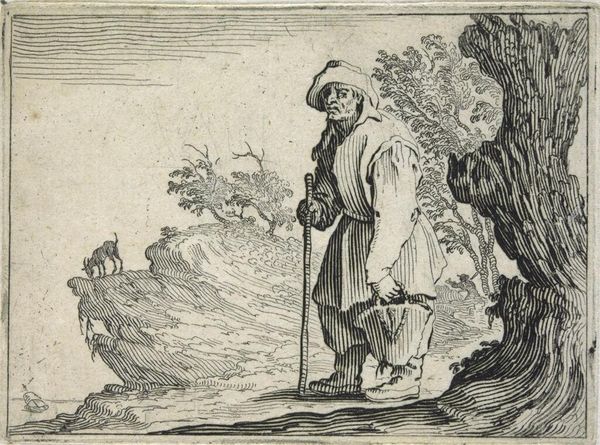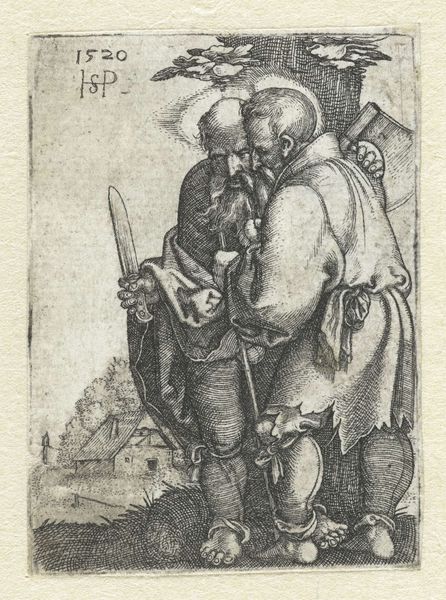
drawing, print, engraving
#
drawing
#
light pencil work
#
quirky sketch
# print
#
landscape
#
personal sketchbook
#
sketchwork
#
pen-ink sketch
#
line
#
sketchbook drawing
#
genre-painting
#
storyboard and sketchbook work
#
sketchbook art
#
engraving
#
fantasy sketch
#
realism
#
initial sketch
Dimensions: width 152 mm, height 196 mm
Copyright: Rijks Museum: Open Domain
Curator: This drawing by Reinier Craeyvanger, called "Pelgrim in gesprek," or "Pilgrim in conversation" in English, caught my eye in the Rijksmuseum's collection. It was made sometime between 1822 and 1880, employing print and engraving techniques. Editor: It’s got a rather melancholic feel, doesn't it? A quiet somberness conveyed by those delicate, almost ethereal lines. Is this from a personal sketchbook or was it intended for wider circulation? Curator: I lean towards personal sketchbook, judging by the exploratory, informal feel. The pilgrim, likely a religious figure based on the staff, seems to be engaged in discussion with the seated woman. It's very suggestive. Craeyvanger provides few details, relying instead on implication to encourage interpretation. The image almost resembles an illustration to a folktale, rendered with the precision and detail usually applied to paintings, engravings in this instance, with printmaking skills more aligned with larger distribution. It poses a contrast, no? Editor: A powerful tension lies between the intimate nature of a sketch and the relatively wide audience for a print. Was the artist perhaps seeking to elevate the sketch in its social perception? Or was it part of an emergent democratization of imagery, and therefore the sketchbook genre, where private expressions could achieve broader circulation and, thus, public recognition? It's definitely an interesting question, that dynamic tension. Curator: The well itself—that is a significant cultural signifier, certainly, hinting perhaps at both the depth of shared cultural memory and the possibility of extracting truth. But it could equally suggest something about a community’s economic standing in the Dutch landscape of the 19th century. Perhaps the conversation taking place centers on material sustenance and well-being. Editor: Exactly. It provokes questions. I notice how lightly sketched the natural world is; that indicates to me that this piece has a higher stake in society rather than of landscape. Curator: I appreciate how it resists a single interpretation, really. Editor: A quiet invitation to reflection, wouldn’t you say? It captures a very particular moment, not only in the history of Dutch art but potentially for art as communication and public act.
Comments
No comments
Be the first to comment and join the conversation on the ultimate creative platform.
